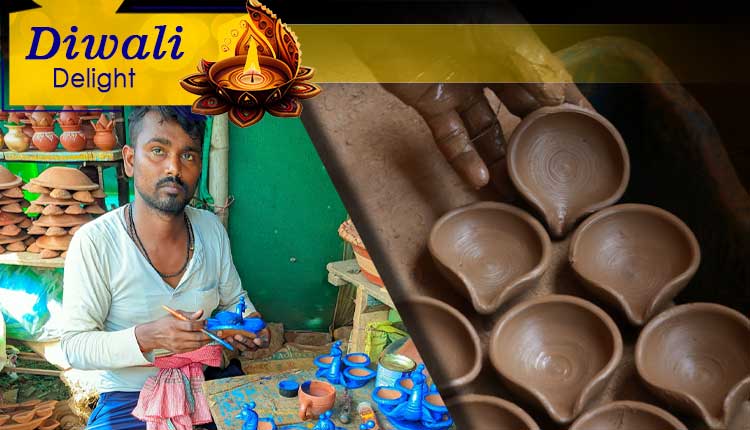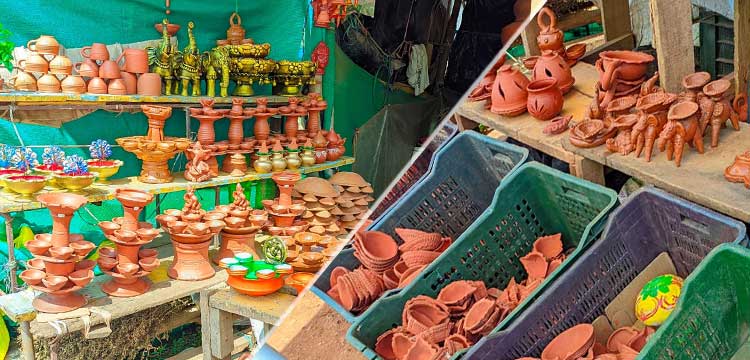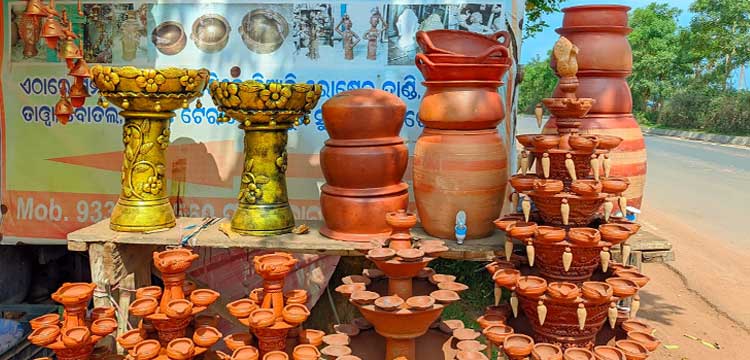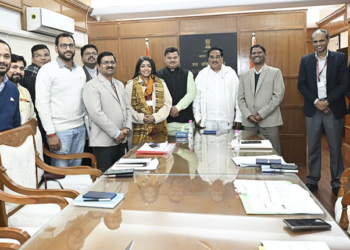As Diwali’s festive spirit envelops the state, the humble diya takes centre stage, illuminating homes and hearts. But have you ever wondered about the skilled artisans who toil tirelessly to create these earthen wonders?
The timeless ritual of lighting diyas during Diwali has its roots in the epic Ramayana. Legend has it that the people of Ayodhya illuminated the city with thousands of diyas to welcome Lord Rama back home after his 14-year exile. Since then, diyas have become an integral part of Diwali celebrations, symbolizing the triumph of light over darkness. However, the demand for traditional diyas has seen a significant decline in recent years, leaving the industry reeling. Gone are the days when potters and their families would work tirelessly to meet the surge in demand, producing thousands of intricately crafted earthen lamps in various shapes and sizes. Until a few years ago, the pre-Diwali season would find pottery communities buzzing with activity. The once-thriving craft has now slowed to a trickle, threatening the livelihoods of these skilled artisans.
In the quaint village of Phulapokhari, 30 kilometres from Bhubaneswar, Ommcom News delves into the lives of diya-makers struggling to make ends meet. Despite their tireless efforts, these potters face an uncertain future.
Phulapokhari village is home to 60 families, with 40 belonging to the potter community. The remaining families are engaged in farming. A stroll through the village reveals the potters’ homes, easily identifiable by the rows of clay lamps, diyas, and pots drying outside. Here, the potter’s wheel spins tirelessly from 6 am to 5 pm, every day of the week. Skilled artisans transform lumps of clay into exquisite creations, crafting pots, diyas, and idols of various deities throughout the year. Each household boasts a wheel and oven, where men shape the clay and women expertly bake and embellish the finished products.
Despite keeping the ancient tradition of earthen diyas alive, Phulapokhari’s potters feel neglected by the state government. They lament the lack of support for their craftsmanship, struggling to sustain their livelihood.
Dhananjay Muduli, a skilled potter from Phulapokhari, expresses the frustrations of his community. “We face immense difficulties in sourcing clay and firewood, and our hard work goes unrewarded,” he says. The rise of Chinese diyas has further exacerbated their struggles, leading to a decline in demand for local artisanal products. Despite crafting diyas ranging from 60 paisa to Rs 7,500, Muduli’s business has suffered, particularly after Cyclone Dana. Last year, he sold 28,000 diyas in just three days, but this year, he struggles to find buyers.
Muduli’s father highlights another challenge. “Buyers pay a good price for our products, but the profits never reach us,” he laments. Wholesalers purchase diyas at 80 paisa and resell them for Rs 2, leaving artisans with minimal earnings. To combat this, Muduli and others have started selling directly to customers through their shops. However, the meager profits have discouraged his sons from taking up the traditional occupation.
Santosh Behera, who works in a private hospital, chose not to follow in his family’s pottery-making footsteps. “I saw my parents struggle to make ends meet, so I opted for a more stable career,” he explains. Though he and his siblings have moved away from the craft, they still lend a hand during their free time. This echoes the sentiments of many young people in Phulapokhari, who seek better opportunities beyond their family’s traditional profession.
Sulachana Muduli, who took up pottery making after marriage, urges the government to support artisans like herself. “It’s time for the government to help us preserve the pottery tradition in Phulapokhari,” she pleads.
Muduli advocates for easier access to loans, enabling potters to acquire modern tools and adapt to changing times. By providing assistance, the government can help Phulapokhari’s artisans overcome their struggles and keep their cherished craft alive.
By Rashmi Rekha Das


















